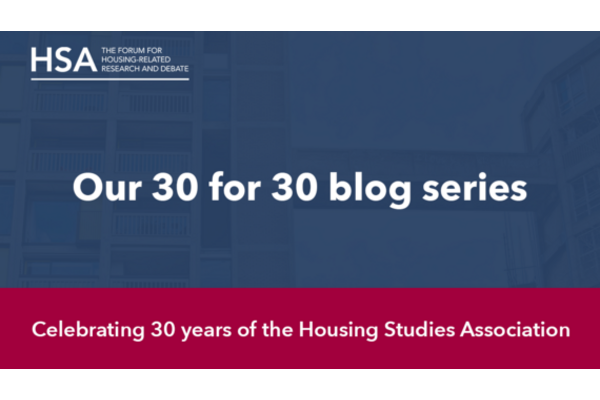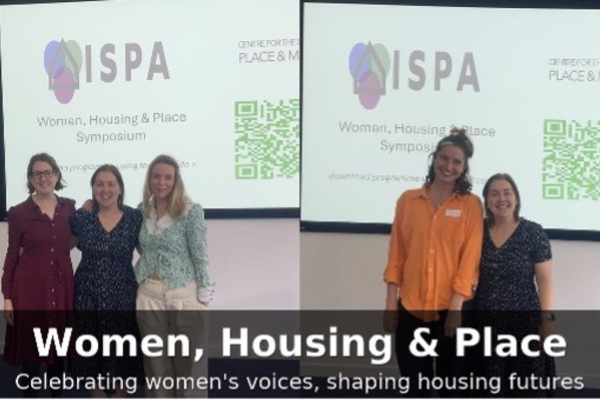
It was a hot summers day in the heart of Yorkshire with a clear blue sky, everyone around me appeared to be enjoying the weather, yet here I was homeless at 18 with two young children and minimal belongings waiting to be let into the council office. I will never forget that day; not just the trauma of what had led to me to that point, but the ‘solutions’ that would be presented to me and realising I had no choice but to accept.
It took me many years to finally feel I had a home, three times homeless and 15 homes in total. Home as a concept is often just taken at face value. It’s obvious! It’s just a place where you live. However, as sociologists and activists have shown over the years, ‘home’ is an incredibly meaningful and complex space of dwelling, especially for working class communities (Allen 2008) including, I want to remind us here, homeless people. Peter Somerville (1992) wrote, almost 30 years ago that home is more than a roof but a complex picture of dimensions and experiences related to our sense of security and identity; a place where one can control their own boundaries and one where they feel safe enough to explore the outside, take risks to build on and grow. It has always been striking, to me, how little housing policy seems capable of taking into account this emotional, psychological aspect of home, failing to provide us a stable supply of affordable opportunities, reducing our places of vital dwelling to cheap build ‘units’, or, if you can be part of the middle-class property game, ‘rental income’ or ‘investments’. This also reminds us of the grotesque inequalities (poverty, systemic racism, displacement, drug addiction, domestic violence and so on) that shape who gets to access and feel ‘at home’ and of the need for sensitive housing policies that can meet the mass of complex needs we have in divided, capitalist societies. I understand we have a neoliberal housing system, but policy within the liberal democratic system is still there to be challenged and refined.
The field of homelessness in the UK too often fails to offer this challenge. There tends to be a research focus on ‘accommodation’ and findings tend to recommend placing people in independent housing as soon as possible to avoid temporary accommodation. This is understandable, to a point; after all, in England the stock of affordable council homes has reduced from just under 6 million in the 1980s to just over 2 million in 2019 (ONS, 2019). Private sector rents are increasing at extraordinary rates (Collinson, 2020) whilst £30 billion has been withdrawn from social security budgets since 2010 (including caps on local housing allowance – ‘housing benefit’), widening inequalities and increasing deep poverty by as much as 26% for families with three or more children (Edmiston & Thakkar, 2020; BBC, 2019). These austerity cuts have also impacted local authorities including severe reductions to homelessness funding (Crisis, 2019). Meanwhile, legislation has been created such as the Homelessness Reduction Act (2017) to help tackle and prevent homelessness, but how effective is this when the funding is not being provided alongside it? This places a further burden on already struggling local authorities, encourages them to artificially reduce their homelessness numbers, thereby heightening the risk of bad management. One example I have found through my research in Leeds is that the pressure to not place homeless people in temporary accommodation works as a ‘frying pan into the fire’ with homeless people being placed in inadequate accommodation via cheap contracts with external agencies and private landlords.
I have been homeless and been housed in temporary accommodation and (supposedly) non-temporary accommodation in Leeds; some of which was deeply inadequate thanks to unscrupulous landlords who are guaranteed state-backed rents. One property I remember very vividly, it had no kitchen window as it was broken and boarded up, the basement was filled with years’ worth of household waste, damp and a boiler that never worked. As long as I lived here, I was technically considered housed and disappeared from the local authority homeless register. I have also worked for a charitable agency, enabling me to see things from both sides. Most of the homes sourced by this charitable agency were through private landlords and many were inadequate and unsuitable while the support they were supposed to be providing was very limited due to the significant caseload. In one case a vulnerable person was left with no heating or hot water for 9 months. This experience is anecdotal, but I do not doubt it is likely representative elsewhere in other organisations, in other towns and cities where there is pressure to place homeless people in ‘non-temporary’ dwellings. Understanding this situation better will be one contribution of my proposed PhD research at the University of Leeds.
The narrative in current literature is very much ‘housing first’. But where are we placing people in practice? Who is really benefitting? And how does it affect people’s sense of identity and security? The truth is, we don’t know. What we do know is that the homeless person has zero input into where they are placed. What good is a house if a drug addict has been placed near a drug dealer, the woman escaping violence has been placed near the family of the perpetrator or they are placed in a home that is in disrepair and unfit for their needs? In each of these scenarios, the person or family are considered ‘housed’ because they have a ‘roof’. If and when they withdraw from support services or flee the property, they are then seen as uncooperative and unwilling to change.
This is why research in housing, housing policy and welfare needs to put those affected by homelessness at its centre to develop a more sensitive understanding of their needs. Without an evaluation that takes account of homeless voices and experiences, how do we know what works in practice? If research and policies are not getting feedback to guide their approaches, then they will never meet the needs of those they are supposed to help. The focus on ‘house’ needs to recalibrate to the concept of ‘home’ and we need to listen to homeless people to make this transition of understanding. It takes more than just one sector to address homelessness, much like the multi-dimensional nature of home, and it will take a holistic approach to help combat it. Even then, of course, funding might be inadequate but at least we will have a better understanding of needs and harm.
As we move out of lockdown, hopefully for the final time, perhaps we are ready for a better public conversation about the meaning of home in all our lives and maybe we can better imagine what it might be like not to have such an anchor for ourselves and our families. At the same time, the pandemic is exacerbating existing housing inequalities and increasing pressure on an already strained system. We need to wake up before it’s too late.
Leanna Fairfax
With thanks to Dr Andrew Wallace for his guidance.

Leanna Fairfax is an MA student at the University of Leeds who is expecting to commence her PhD in the Autumn subject to institutional confirmation. Her research interests include homelessness, housing precarity and lived experiences.







